Abstract
Citric acid-grown cells of the yeast Candida utilis induced two transport systems for citric acid, presumably a proton symport and a facilitated diffusion system for the charged and the undissociated forms of the acid, respectively. Both systems could be observed simultaneously when the transport was measured at 25 degrees C with labelled citric acid at pH 3.5 with the following kinetic parameters: for the low-affinity system, Vmax, 1.14 nmol of undissociated citric acid s-1 mg (dry weight) of cells-1, and Km, 0.59 mM undissociated acid; for the high-affinity system, Vmax, 0.38 nmol of citrate s-1 mg (dry weight) of cells-1, and Km, 0.056 mM citrate. At high pH values (above 5.0), the low-affinity system was absent or not measurable. The two transport systems exhibited different substrate specificities. Isocitric acid was a competitive inhibitor of citric acid for the high-affinity system, suggesting that these tricarboxylic acids used the same transport system, while aconitic, tricarballylic, trimesic, and hemimellitic acids were not competitive inhibitors. With respect to the low-affinity system, isocitric acid, L-lactic acid, and L-malic acid were competitive inhibitors, suggesting that all of these mono-, di-, and tricarboxylic acids used the same low-affinity transport system. The two transport systems were repressed by glucose, and as a consequence diauxic growth was observed. Both systems were inducible, and not only citric acid but also lactic acid and malic acid may induce those transport systems. The induction of both systems was not dependent on the relative concentration of the anionic form(s) and of undissociated citric acid in the culture medium.(ABSTRACT TRUNCATED AT 250 WORDS)
Full text
PDF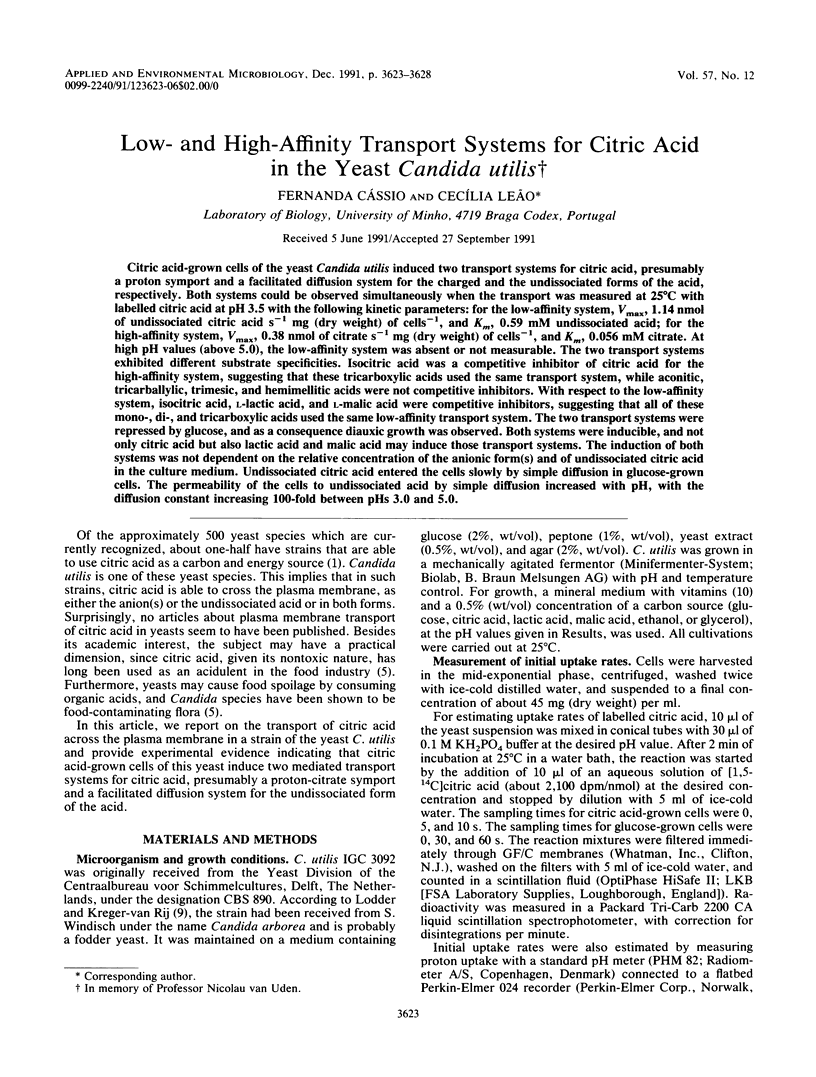
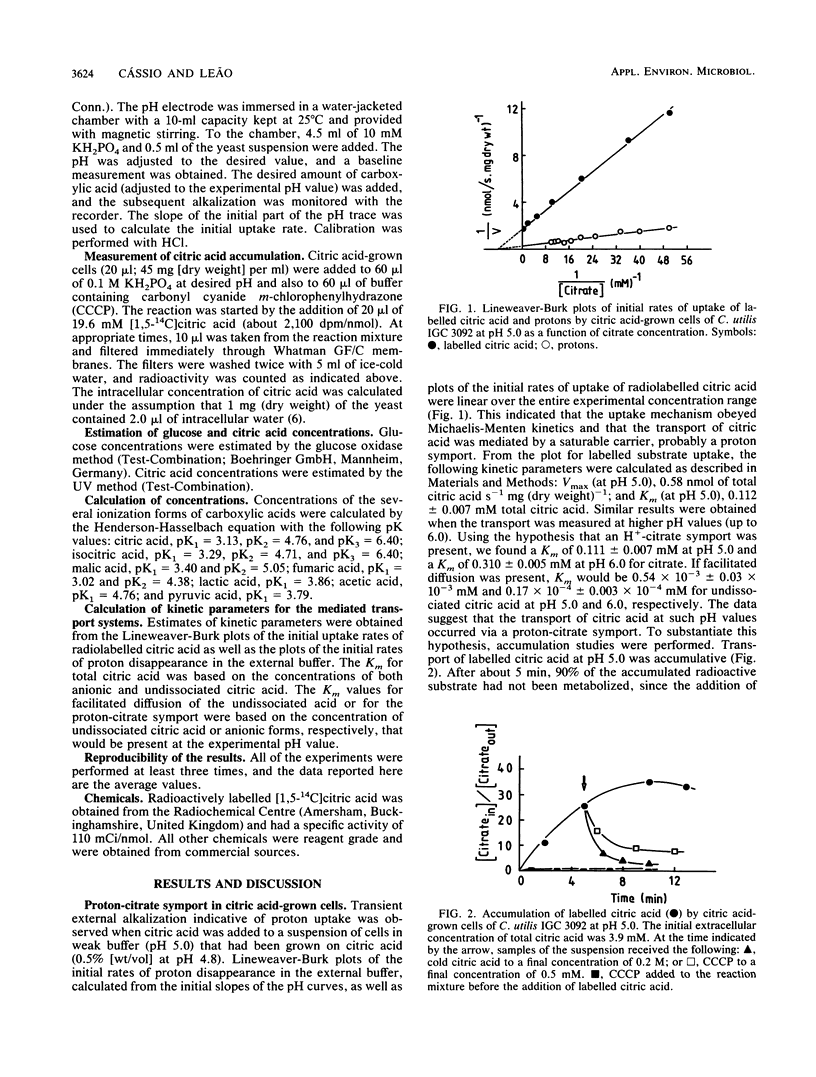
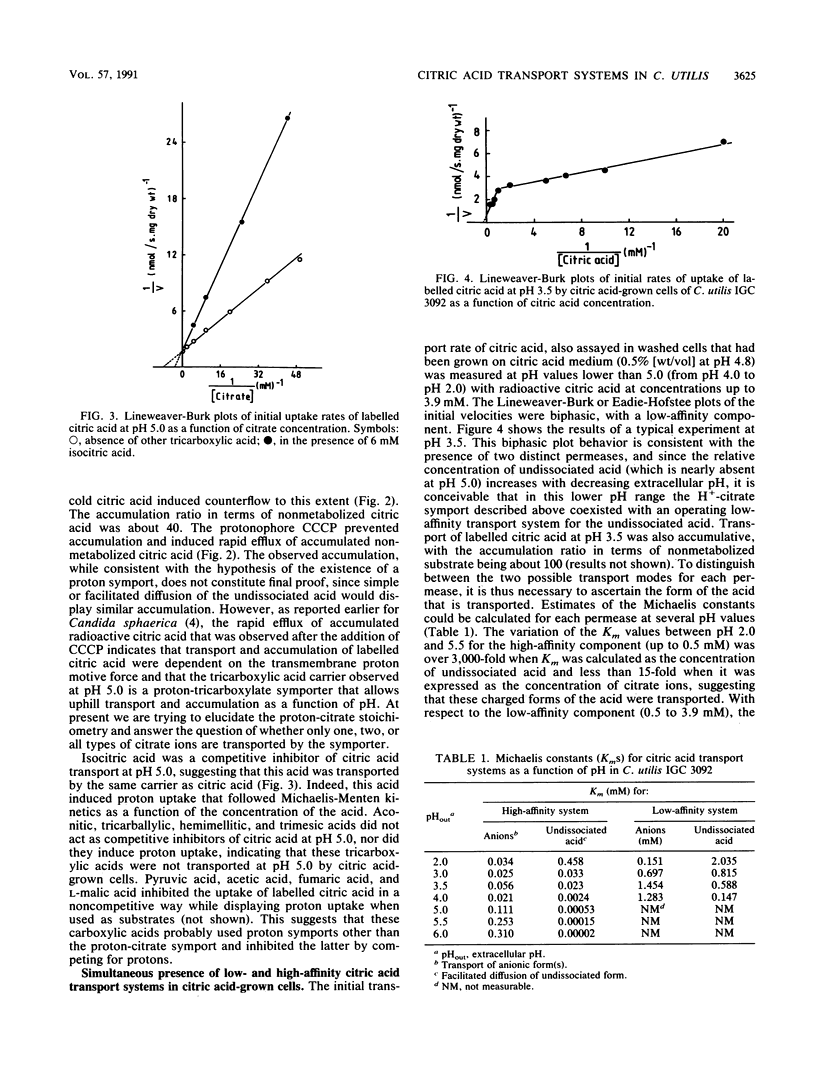
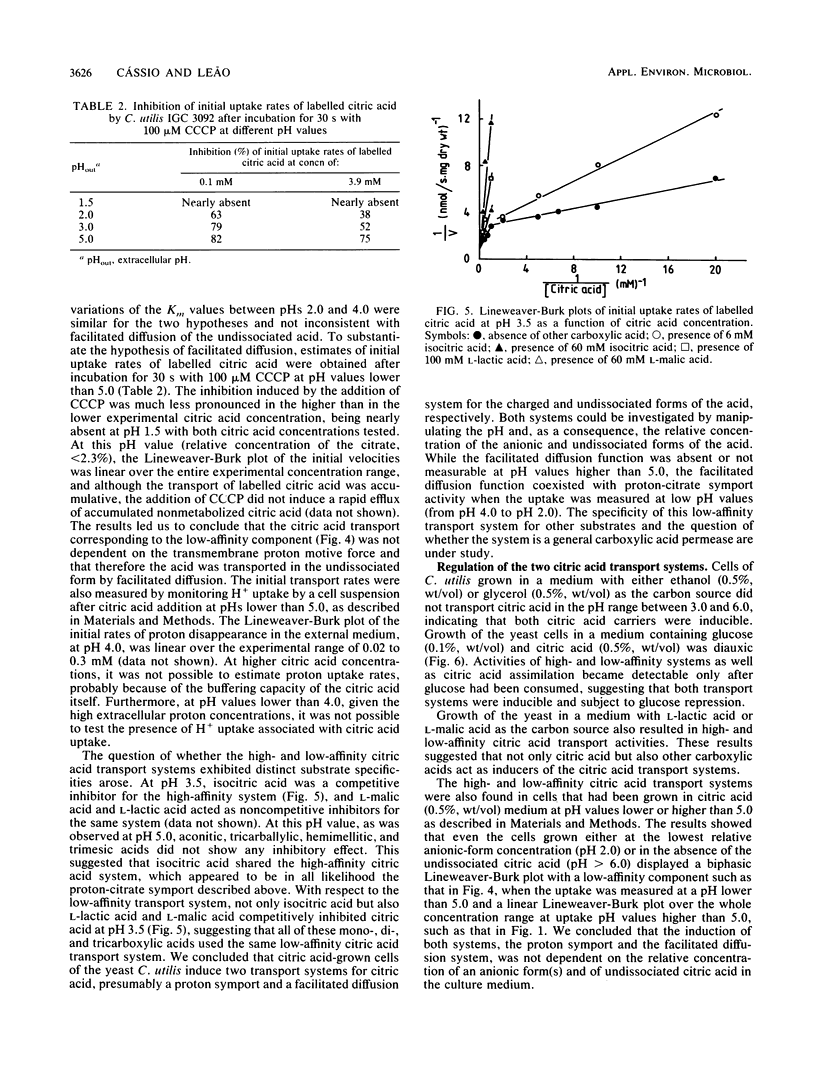
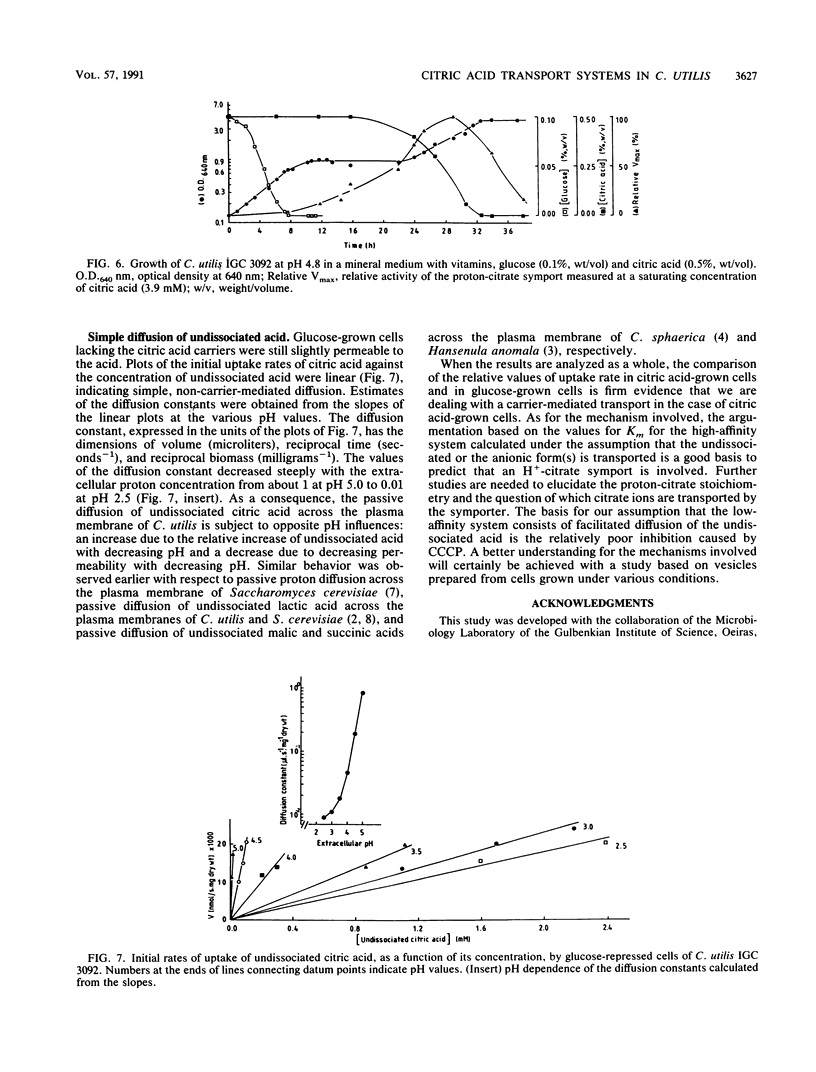
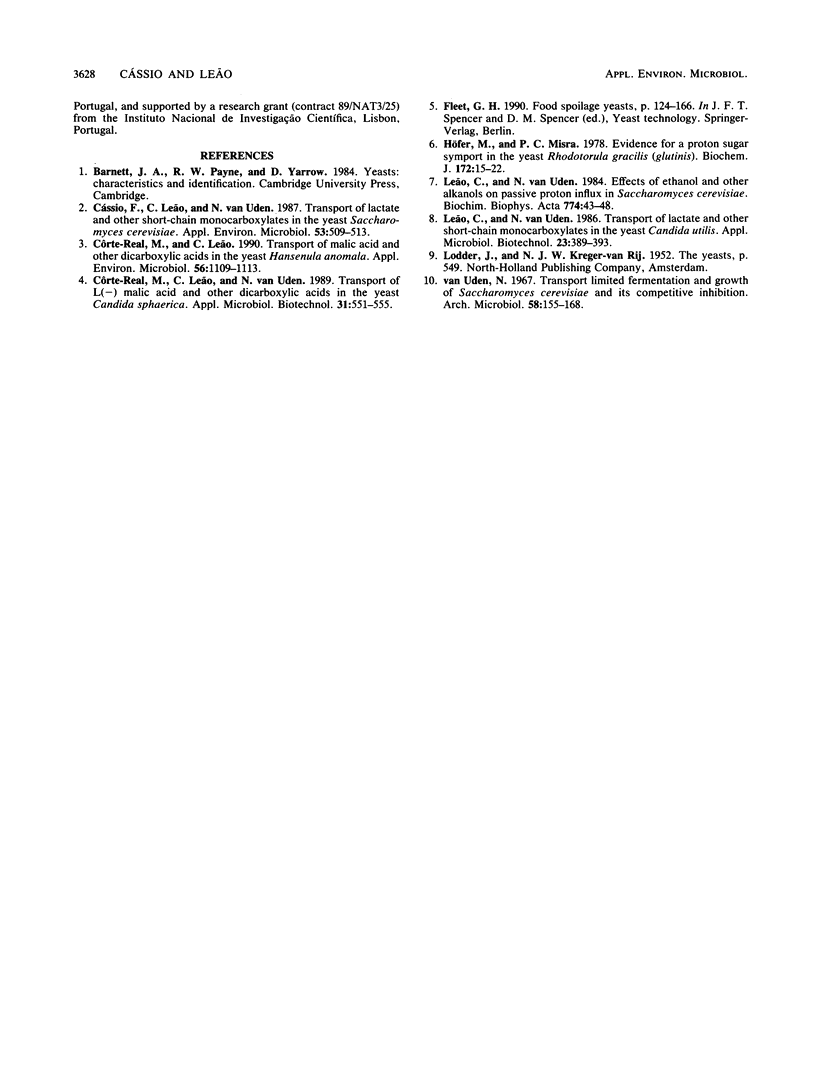
Selected References
These references are in PubMed. This may not be the complete list of references from this article.
- Cássio F., Leão C., van Uden N. Transport of lactate and other short-chain monocarboxylates in the yeast Saccharomyces cerevisiae. Appl Environ Microbiol. 1987 Mar;53(3):509–513. doi: 10.1128/aem.53.3.509-513.1987. [DOI] [PMC free article] [PubMed] [Google Scholar]
- Côrte-Real M., Leão C. Transport of malic acid and other dicarboxylic acids in the yeast Hansenula anomala. Appl Environ Microbiol. 1990 Apr;56(4):1109–1113. doi: 10.1128/aem.56.4.1109-1113.1990. [DOI] [PMC free article] [PubMed] [Google Scholar]
- Höfer M., Misra P. C. Evidence for a proton/sugar symport in the yeast Rhodotorula gracilis (glutinis). Biochem J. 1978 Apr 15;172(1):15–22. doi: 10.1042/bj1720015. [DOI] [PMC free article] [PubMed] [Google Scholar]
- Leão C., Van Uden N. Effects of ethanol and other alkanols on passive proton influx in the yeast Saccharomyces cerevisiae. Biochim Biophys Acta. 1984 Jul 11;774(1):43–48. doi: 10.1016/0005-2736(84)90272-4. [DOI] [PubMed] [Google Scholar]
- van Uden N. Transport-limited fermentation and growth of saccharomyces cerevisiae and its competitive inhibition. Arch Mikrobiol. 1967;58(2):155–168. doi: 10.1007/BF00406676. [DOI] [PubMed] [Google Scholar]


